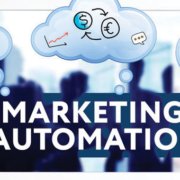5 Strategies for Powerful Senior Living Branding
Marketing jargon like “branding” can often sound equal parts mysterious and intimidating. But effective senior living branding doesn’t have to be either.
1. First, make sure you understand what a brand is.
An effective brand evokes a reaction in people whenever they come across the company’s name. They might get excited (Game of Thrones!). Or hungry (Krispy Kreme!). Or nostalgic (Fun Dip or Pop Rocks!).
Bottom line: Effective branding will make people feel. HOW they feel very much depends on the experience you deliver to them—or that people have heard you deliver.
For example, if you’ve never eaten at Awesome Pizza Shop, but you’ve heard your friends ooh and ahh about the food, the prices, and the customer service, you’ll likely have a very positive reaction to the brand even though you haven’t experienced it yourself yet. That’s the power of branding.
2. Develop accurate and insightful buyer personas.
Before you can develop an effective brand that delivers the type of experience your ideal prospect craves, you need to understand your ideal prospect first. We accomplish this through persona development.
Don’t rush this process. Taking the time to understand and develop your buyer personas will help you develop a brand that accurately reflects your community and truly resonates with people.
The ONLY way you can develop an accurate senior living persona is by talking to . . .
- Real residents (and/or the adult children) who chose your community (including those who love the community as well as some who might be disappointed in it)
- Lost prospects (to discover why they didn’t choose your community)
You can’t rely on your sales and marketing teams to develop the personas on their own. They will (and should) have input, of course. But you need to talk to real people in order to challenge and confirm assumptions. Bottom line: You can’t develop effective senior living branding if you don’t know your ideal buyer inside and out.
3. Choose words, colors, and visuals that reflect and reinforce what you discovered during the persona development process.
If you’re developing a brand for people in their 60s when your ideal persona is 80, your messaging is probably going to be off the mark. If your ideal buyer tends to skew conservative, but you’ve created a brand that has a more progressive tone or feel, it’s not going to resonate.
So, how can you make sure you’re developing messaging and visuals that hit the mark? Share your persona work with your writers and designers. (The best writers and designers will ask you for your persona info; but if they don’t, you should share your key findings.) Learn more about writing and designing for senior living audiences here.
4. Always be authentic and honest.
Which do you think will resonate more with your prospective buyers: images of older adults where everything is posed? Or natural, candid photos of people from your community? Or how about this: Do your personas want to hear cliched stories about the “golden years” or a refreshing take on growing older in your community?
Authenticity can go a long way in helping to create a winning senior living brand. But brand authenticity has to be exactly that—authentic. And remember this: you MUST deliver on your brand promise. If not, you will be called out on it in places like social media and online reviews. And that could damage your brand for the long-term.
In fact, Chief Marketer recommends that you begin your brand development by looking internally to the people who deliver your brand every day—because being “self-aware” is just as important as being honest. For senior living communities, this would include not only your sales and marketing teams, but everyone on the operations side—activities, facilities, dining, health, and so forth.
Chief Marketer says, “Make it a collaborative process, and be sure to include the right people. It’s just as important to hear from customer-facing staff as it is the C-suite. Involve your internal stakeholders early in the process, and empower them to ‘be your brand.'”
5. Be consistent with your senior living branding across all media.
Too often, we see senior living communities do awesome branding work, but they forget to update all marketing and sales channels. Think website, social media, email signatures, collateral materials, business cards, stationery—the list is seemingly endless. And it can get even more complex when you have multiple communities that fall under the same brand umbrella.
Task someone within your marketing team as the “brand manager.” This person will serve as the keeper of the brand, making sure the look and feel and messaging are consistent across all media.
To make their life easier, they should check out SMART Brand and SMART Stores. These solutions will help them manage the brand consistently within the community as well as across multiple locations.




